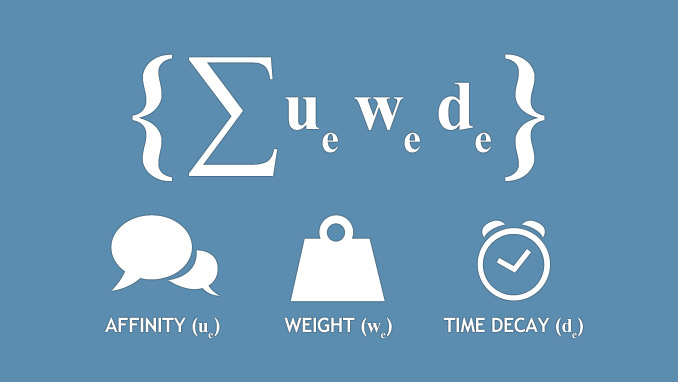The Social Media Algorithm
Isn’t it almost always the case that when we refer to the term ‘algorithm’ in digital marketing context, we’re thinking search engines? This is because search is so important for our brand’s organic visibility. However, with increasing emphasis on Social Media as a powerful online marketing channel, let’s spend some time exploring the social media algorithms.
Social media is much more complex than what we might see on the surface. Perhaps it’s because of the less serious facade that happens on social media channels; the fun-oriented and entertaining content featured. Fact is, each social media channel has its own algorithm, which determines how frequently and vast your content gets shared.
Let’s start with EdgeRank; the algorithm that Facebook uses to determine which piece of content to display on individual users’ news feed. Just like there are tools to check your SEO scoring on Google, there are tools to check your EdgeRank. EdgeRank is made up of three important factors which involves a handful of sub-factors: Affinity Score, Weight and Time.
Affinity Score
The Affinity Score defines connectedness. For instance, if you tend to interact majorly with posts that comes from your siblings, then chances are your news-feed will mostly show his activities. Facebook’s algorithm will understand your interactions as a sign that you probably would want to be kept up-to-date with his activities.
Edge Weight
Weight is basically the value of an interaction/action. For example, activities that happen on videos and pictures have more weight than links hence interactions on videos and pictures by your friends have more chance of showing up on your news-feed than actions on links.
Time Decay
The time decay factor takes effect on many other sub-factors. For instance, how often someone signs-in effects whether his/her activity will show up on other friends’ news-feeds. If you were to update your status daily as oppose to once a month, then Facebook may see the value of your post differently and the chance of an individual’s post appearing on a friend’s news-feed would change accordingly.
Just a few days ago, Twitter’s algorithm hit the news regarding the appearance of favorite tweets. Basically, if a user you were following ‘favorited’ a tweet, you’ll see it in your Twitter feed.
Consequently, it’s not just search and social media that engages an algorithm, but vertical searches such as YouTube as well. The latest update on YouTube’s algorithm is a tweak in ‘watch time’. The longer average time watched, the better perceived the video and hence, the higher chance of showing up first on YouTube video search. Some of the ranking factors commonly discussed regarding YouTube include backlinks, amount of channel subscribers, length of video, natural views from Google Search and more.
As for LinkedIn, how your profile shows up on search depends on the person searching. It’s not really a keyword, tag-match concept that LinkedIn uses. According to LinkedIn, they generate relevancy scoring uniquely for each member. Relevancy itself is based on several factors and LinkedIn has recommended adding relevant keywords into your profile according to what makes sense. Over-optimizing on profile keywords may negatively impact your profile’s ranking in search results.
Source/credit: business2community.com, linkedin.com, edgerank.net





